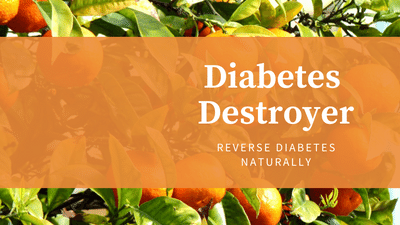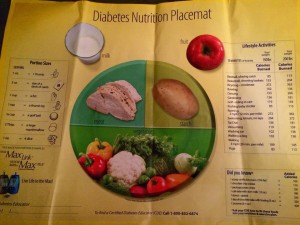Dr. Junger
We live in a world filled with toxins. We hear about toxins in our food, water, and air, but we also hear about “toxic” relationships and “toxic” thoughts.
The cocktail of toxins we are exposed to everyday creates health issues that we are all experiencing to different degrees.
Commonplace complaints such as headaches, low energy, bowel irregularities, allergies, depression, skin issues and more are largely caused by overloaded detox systems in our bodies.
But we can change this situation.
Today, I’ll share with you how toxins affect our health and 5 ways we can reduce our exposure to them.
Here we go. Let’s start by getting clear on what a toxin is.
A toxin is something that interferes with normal physiology and negatively impacts bodily function.
Some toxins, known as endotoxins, are waste products from the normal activity of cells. Uric acid, ammonia, lactic acid, and homocysteine fall in this category. When these toxins build up, they cause diseases. Some are very specific, for example, when uric acid lingers, it causes gout.
Exotoxins, or xenobiotics, are human-made toxins that we are exposed to intentionally or inadvertently. Thousands of chemicals are being invented every year. These chemicals, alone or in combination, may cause disruption of the normal cell function.
Let’s give some examples of where we are exposed to human-made toxins.
food
food packaging
prescription drugs
synthetic clothes
carpets (especially synthetic wall-to-wall carpet)
house paint
building materials in offices and homes
mattresses
vinyl shower curtains
air fresheners
household cleaning products
cosmetics
body-care products like shampoo and conditioner
perfumes and fragrances
consumer products like children’s toys
emissions from cars and trucks
car interiors (that “new car smell” is chemical off-gassing from PVC)
tap water and shower water
It’s amazing to think that most of these items were not to be found 100 years ago. Now more than ever we need to bring honest awareness about the extent of our daily exposure and its effects.
We do know how some of these chemicals negatively affect the body. Common chemicals in sunscreens are linked to hormone disruption, cell damage, and skin tumors.
While it’s impossible to exclude all toxins from our lives, it’s possible to reduce much of our exposure.
How toxins affect our health
Toxins have many ways of interfering with the normal physiology of life. They can do it in a unique and very specific way, like arsenic, a deadly poison that causes asphyxia by blocking the usage of oxygen needed for the full metabolism of glucose.
Toxins may block an enzyme needed for an important body function. Or they may stimulate a specific body function in such persistent ways that it begins to cause damage.
Other toxins kill the good bacteria in the intestinal tract, block oxygen from binding to red blood cells, interfere with DNA synthesis by switching genes on and off, or block the absorption of different vitamins.
That’s some of the specific ways a toxin can affect us. But a toxin tends to cause more damage when it’s in an environment with other toxins. There are two important concepts to help us understand how this works.
The first is called bioaccumulation. This means that toxins build up in our tissues and cells more quickly than they are eliminated. The second concept is synergy. Toxins work alone but more often than not, they work in synergy with each other.
Multiple toxins are already combining in our bodies, altering and shifting our inner environments in ways that we’re only just starting to figure out.
Toxicity describes the wider, low-grade state that, to one degree or another, everyone who breathes today’s air, eats today’s food, and lives in today’s cities, suburbs, or rural areas is experiencing inside.
The effects of toxicity are many. Allergies, constipation,headaches, depression, skin issues, digestive problems, and many more.
To help support our body we need some strategies to reduce our exposure and help us cleanse.
Let’s jump into those now.
5 ways to reduce your toxic load
We want to find a balance between reducing our exposure without making ourselves crazy with anxiety. It’s true that we can’t remove all or even most of the toxins we are exposed to, but we can make good progress to lessen the effects of them on our health.
1. Eat Whole foods.
The major source of chemicals and toxins comes from our food. So we’ll repeat this until the cows come home: Look for whole foods free of preservatives, conservatives, and coloring agents. If available, choose chemical-free and organic varieties.
2. Find your toxic triggers.
Toxic buildup could occur from eating too many of the foods that don’t work for you.
3. Use chemical-free cosmetics, body care, and cleaning products.
Over the last few years, this topic has been written about extensively. We now have lots of companies that are creating chemical-free products.
Yet, I can’t tell you how many of my patients still haven’t switched over. Perhaps, they just think it isn’t that important. But remember, a single toxin is often not the problem, it’s the symphony of them interacting together.
I always check how clean my products are at the Environmental Working Group‘s consumer guides.
4. Filter your water.
Water is a major source of toxins today. A recent study showed that people drink water contaminated with antidepressants, hormones, heart medications, and other prescription and over-the-counter medications that have made it through the water-treatment system.
Add to that the chlorine, carcinogens from industrial and agricultural waste, and you’ve got some real messy stuff.
Filter your drinking water and shower water. The city or town-supplied water in our showers and bathtubs has equal potential to add to our toxic load, because we absorb more water through our skin via bathing and showering than through drinking.
Use the water-filter buying guide from the Environmental Working Group to help you find a filter that’s a good fit for you.
5. Do a seasonal Cleanse.
Toxins bioaccumulate in tissues faster than they can be eliminated. When toxins cannot be eliminated in a timely manner, they remain in circulation causing irritation and damage. Contact your Integrative Medicine practitioner for a detox program.
Simple steps. Stay Healthy.












